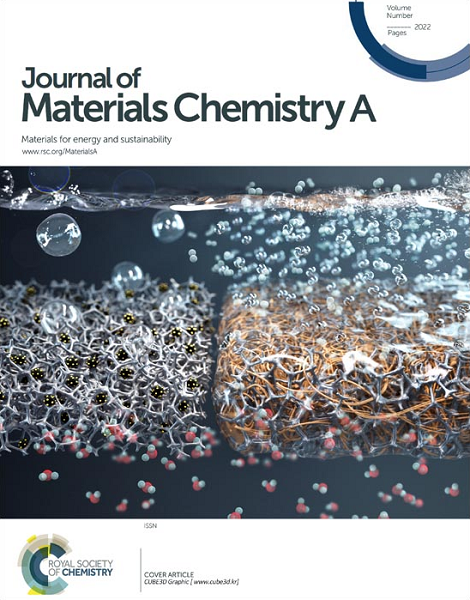Electrodeposition of Reactive Polymer Networks for Conformal Ultrathin Coatings Amenable to Post-Deposition Functionalization
IF 9.5
2区 材料科学
Q1 CHEMISTRY, PHYSICAL
引用次数: 0
Abstract
Functional thin coatings are crucial in modern and emerging technologies, providing specified surface properties and protection, thereby influencing the performance and lifetime of materials and devices. The electrodeposition of polymer networks (EPoN) has recently been reported as a facile and potentially broadly applicable method to fabricate conformal polymeric ultrathin films on conductive substrates with arbitrary shapes and surface topography under mild solution conditions. In this work, a new generation of EPoN is introduced that utilizes a chemically reactive polymer appended by a small fraction of a electrochemical crosslinker as side groups. This EPoN iteration eliminates the need for precise end-group functionalization, enables the tuning of crosslink density and film thickness independent of polymer size, and the resulting reactive ultrathin films are amenable to post-deposition modification with desired functionalities using facile click-chemistry. To demonstrate this concept, we electrodeposit polyisoprene with small side-group fractions of the oxidative crosslinker phenol (<5%) as a thiol-ene-reactive polymer network coating. The EPoN-derived ultrathin films are tunable and uniform with a thickness in the 100s of nanometers depending on phenol fraction and electrodeposition potential, and show a conformal morphology on complex porous electrode architectures. We further demonstrate post-EPoN functionalization of the ultrathin polyisoprene coatings with thiol-ene chemistry.适于沉积后功能化的保形超薄涂层反应性聚合物网络的电沉积
功能性薄涂层在现代和新兴技术中至关重要,它提供特定的表面特性和保护,从而影响材料和设备的性能和寿命。电沉积聚合物网络(EPoN)最近被报道为在温和的溶液条件下在任意形状和表面形貌的导电衬底上制备保形聚合物超薄膜的一种简便且具有广泛应用潜力的方法。在这项工作中,介绍了新一代EPoN,它利用化学反应性聚合物附加一小部分电化学交联剂作为侧基。这种EPoN迭代消除了对精确端基功能化的需要,使交联密度和薄膜厚度的调整与聚合物尺寸无关,并且所得到的反应性超薄薄膜可以使用简单的点击化学进行沉积后修饰,具有所需的功能。为了证明这一概念,我们将聚异戊二烯与氧化交联剂苯酚(<5%)的小侧基部分电沉积作为硫醇-反应性聚合物网络涂层。epon衍生的超薄膜可调且均匀,厚度在100纳米左右,取决于苯酚含量和电沉积电位,并且在复杂的多孔电极结构上表现出保形形态。我们进一步证明了超薄聚异戊二烯涂层的后epon功能化与巯基化学。
本文章由计算机程序翻译,如有差异,请以英文原文为准。
求助全文
约1分钟内获得全文
求助全文
来源期刊

Journal of Materials Chemistry A
CHEMISTRY, PHYSICAL-ENERGY & FUELS
CiteScore
19.50
自引率
5.00%
发文量
1892
审稿时长
1.5 months
期刊介绍:
The Journal of Materials Chemistry A, B & C covers a wide range of high-quality studies in the field of materials chemistry, with each section focusing on specific applications of the materials studied. Journal of Materials Chemistry A emphasizes applications in energy and sustainability, including topics such as artificial photosynthesis, batteries, and fuel cells. Journal of Materials Chemistry B focuses on applications in biology and medicine, while Journal of Materials Chemistry C covers applications in optical, magnetic, and electronic devices. Example topic areas within the scope of Journal of Materials Chemistry A include catalysis, green/sustainable materials, sensors, and water treatment, among others.
 求助内容:
求助内容: 应助结果提醒方式:
应助结果提醒方式:


